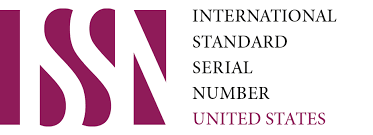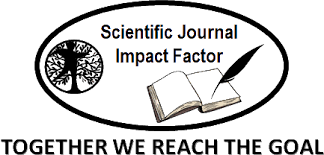English-Uzbek Translation Process in Modern Community
Keywords:
translation rules, simultaneous translation, scientific significance, language toolAbstract
The art of translation is a difficult and at the same time an honorable job. To translate a work of art, one must be a poet-writer, and he must also have a second talent - the ability to translate. One of the most important conditions is that the translator is not only fluent in his native language, but also very fluent in the language of the work being translated, and quickly recognizes their subtleties. The translator must be a person with a wide range of general knowledge, rich life experience, and an advanced culture. The translator must know the life and living conditions of the people he is translating from
References
Bozorova, B. S., & Zuparova, S. S. (2022). EFFECT OF PHYTOHARMONES ON PLANT GROWTH. EUROPEAN JOURNAL OF MODERN MEDICINE AND PRACTICE, 2(3), 31-34.
Zuparova, S. S. (2021). Using Didactic Games in Teaching Foreign Languages. Academic research in educational sciences, 2(3), 909-913.
Orazova, F. O., & Krivosheyeva, G. N. (2022). PRINCIPLES OF TEACHING GRAMMAR. Academic research in educational sciences, 3(5), 1464-1468.
Orazova, F. O. (2021). ANALYSIS OF BORROWING WORDS FROM OTHER LANGUAGES. Экономика и социум, (11-2 (90)), 846-848.
Ruzmetova, M. A. (2022). BENEFITS OF ROLE-PLAY ACTIVITIES IN TEACHING FOREIGN LANGUAGES. Academic research in educational sciences, 3(2), 203-207.
Ruzmetova, M. A., & Ergashev, D. D. (2021). METHODS OF USING COMMUNICATIVE GAMES IN ENGLISH LESSONS. Экономика и социум, (9 (88)), 958-961.
Djurayeva, Y., Orazova, F., & Kayumova, G. (2020). Applying independent education in foreign language classes and its problems. European Journal of Research and Reflection in Educational Sciences, 8(10), 195-199.
Djurayeva, Y., Orazova, F., & Kayumova, G. (2020). Applying independent education in foreign language classes and its problems. European Journal of Research and Reflection in Educational Sciences, 8(10), 195-199.
Ernazarova, G. O., Mukaddamovna, K. Z., Valievna, Q. I., & Bolatbekovich, K. A. (2022). The need to study pedagogical professional thinking. Eurasian Journal of Learning and Academic Teaching, 5, 95-98.
Ibrohimov, F. A., & Kabirova, Z. M. (2021). Inklyuziv ta’lim va yangicha pedagogik yondashuvlar. Academic research in educational sciences, 2(CSPI conference 1), 567-571.
Кабирова, З. М. (2022). АХБОРОТ-ТАЪЛИМ МУҲИТИНИ ШАКЛЛАНТИРИШГА ЙЎНАЛТИРИЛГАН АРАЛАШ ТАЪЛИМ ТЕХНОЛОГИЯЛАРИДАН ФОЙДАЛАНИШ. INTEGRATION OF SCIENCE, EDUCATION AND PRACTICE. SCIENTIFIC-METHODICAL JOURNAL, 3(10), 20-23.
Каримов, Б. З. (2020). Рақамли далиллар категориясининг илмий-назарий масалалари. Илмий мақола–Т.: ТDYU Yuridik fanlar axborotnomasi–Вестник юридических наук–Review of Law Sciences, 5, 168.
Mamanovych, A. L., & Sharofiddin o’g’li, B. S. (2022). ENVIRONMENTAL BEHAVIOR CHANGE AND STUDENTS'ENVIRONMENTAL ATTITUDE. ResearchJet Journal of Analysis and Inventions, 3(12), 140-144.
Mamanovich, A. L. (2022). PEDAGOGICAL PROPERTIES OF ENVIRONMENTAL EDUCATION AND EDUCATION IN EDUCATIONAL INSTITUTIONS. Open Access Repository, 8(12), 624-627.
Кадырова, З. З. (2021). Некоторые комментарии к интерпретации и противопоставлению аспектов терминов перефразирование и перифраз. Теоретическая и прикладная наука, 1(6), 486-489.
Qodirova, Z. Z. (2019). Perifraza obrazli idroq mahsuli. Ilm sarchashmalari, 1(1), 54-57.
Bazarova, E., & Kadirova, Z. (2020). Practical knowledge of the stone names in linguistics. Scientific Bulletin of Namangan State University, 2(1), 178-181.
Kadirova, Z. Z. (2022). Lithosonyms used in the works of Alisher Navoi. NeuroQuantology, 10(10), 1907-1913.
Kadirova, Z. Z. (2022). The role of the names of precious stones in the formation of anthroponyms in the Uzbek language. International Scientific Journal Theoretical & Applied Science, 1(1), 182-187.
Downloads
Published
Issue
Section
License

This work is licensed under a Creative Commons Attribution 4.0 International License.
User Rights
Under the Creative Commons Attribution-NonCommercial 4.0 International (CC-BY-NC), the author (s) and users are free to share (copy, distribute and transmit the contribution).
Rights of Authors
Authors retain the following rights:
1. Copyright and other proprietary rights relating to the article, such as patent rights,
2. the right to use the substance of the article in future works, including lectures and books,
3. the right to reproduce the article for own purposes, provided the copies are not offered for sale,
4. the right to self-archive the article.












